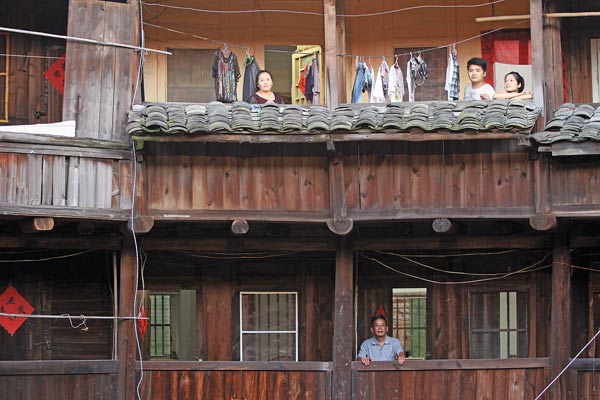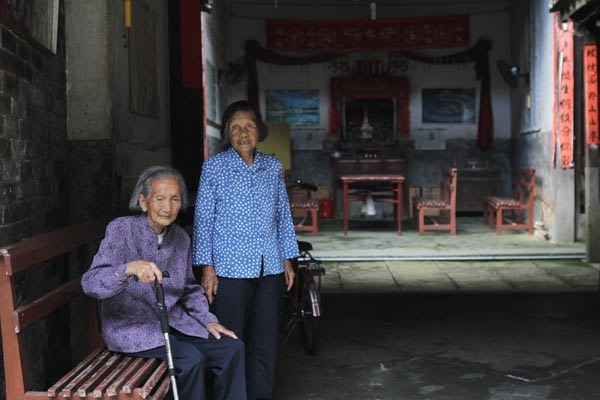 |
|
Residents are proud to live in the tulou.
|
To the local people who grew up in the
tulou, the structures are just normal houses. But through his conversations with visitors, Lin grew to realize that each
tulou is an extraordinary piece of architecture.
"What surprised me most is that people were really interested in our group lifestyle," he said. "They thought it incredible that so many people could live together in harmony."
As tourist numbers soared, Lin couldn't afford to provide his services gratis, so he started charging a fee to cover his costs. Spotting a business opportunity, he gave up farming and entered the tourism industry in the late 1990s.
Lin is happy to relate stories about the tulou. He explains about the buildings in a passionate way that impresses visitors and many have subsequently become his friends.
 |
|
Su Haoyu (left), 74 and 58-year-old Jiang Dailian grew up in the old building and have lived in it all their lives.
|
Lin has a habit of making notes about visitors' comments so he can improve his skills as a tour guide. After years of collating these notes, he has developed a series of tour commentaries that are used by all the guides in Yongding.
Fujian tulou clusters consist of different-sized circular and rectangular buildings with faded yellow clay walls. Surrounded by enchanting mountains and streams, the dark brown wooden roofs look magnificent at sunset.
The buildings are arranged in a way that enables them to blend in with the environment, providing first-time visitors with breathtaking views and peace and quiet.
The best-known examples are: Zhencheng Lou, where Lin lives; Jiqing Lou, the area's oldest earth building which has a history of 580 years; and Chengqi Lou, the largest tulou on the site.
According to tulou expert Xu Songsheng, the Hakka people have a strong sense of ancestry. The people living in the tulou are all descended from a common ancestor. The buildings' circular or rectangular shapes comprise an axis line, a gate, a central section, a courtyard and the main building.
"The buildings are mainly four or five stories high. The first floor serves as the kitchen, the second is used for grain storage and the upper floors act as living areas," Xu said. "Because of their defensive function, only rooms on the third floor and higher have windows - and they are very small. With enough food, the residents could survive a long time under attack.
We recommend:
